Evercool Silent Shark CPU Cooler Review

Evercool designed a cooler with a dual-array tower heatsink and one unique peculiarity. However, this wasn’t the reason why we really liked it. Read our review to find out why!
The Taiwanese Evercool Thermal Co., Ltd. has been in the cooling components business for almost 20 years. They have established themselves as a manufacturer of affordable cooling components including fans for many reference coolers out there and focus on the entry-level market. Over the past years the company has had quite a few products, some quite weak and some pretty decent, but we couldn’t recall even one that would proudly bear the title of a super-cooler.
The new unusually low-priced Evercool product, Silent Shark, will attempt to change this situation. This cooler boasts at least one unique peculiarity, which makes it a very interesting and intriguing product to review. But, let’s starts from the very beginning.
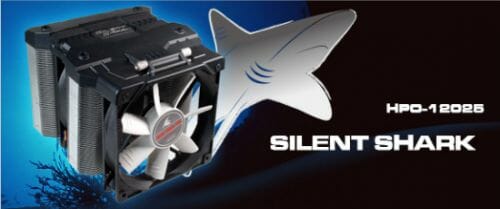
Technical Specifications and Recommended Pricing
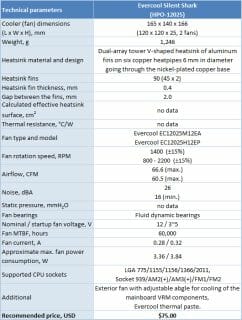
Packaging and Accessories
Evercool Silent Shark comes in a pretty large box with a plastic carry handle and a clear plastic cut-out window in the front of the box, which reveals part of the heatsink with two fans:
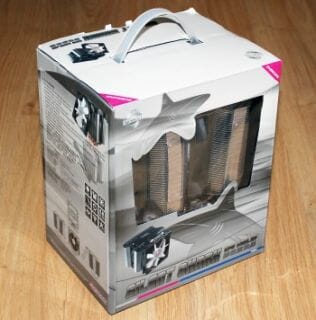
The back and sides of the packaging are highly informative, although there was enough room there even for a couple of sharks with gills on the dorsal fin:
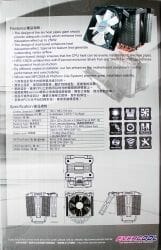
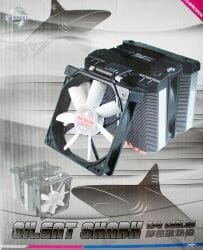
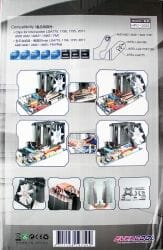
Inside the box we find a plastic casing holding the cooler. The box with accessories bundle is located at the bottom of that casing:
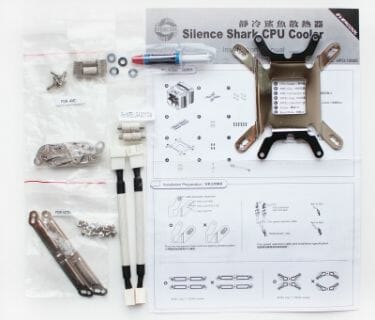
As we can see, there is everything necessary to successfully install the cooler, including the backplate, thermal paste with 5 W/(m*K) thermal conductivity and 0.007 ?C*in2/W thermal resistance, manual and adapters with resistors for lowering the fans rotation speeds.
The cooler is made in China and is priced at $75. It comes with a 2-year warranty.
Design and Functionality
The thing that impresses you when you see Evercool Silent Shark is its size and weight. This cooler is 165 mm tall, 140 mm wide and 166 mm long and weighs 1246 grams. All in all, it is a very large and heavy cooler, just the way it is supposed to be:
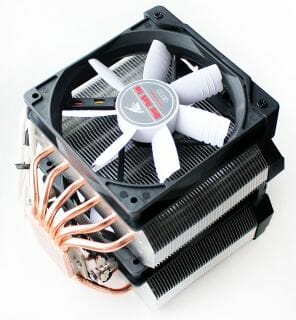
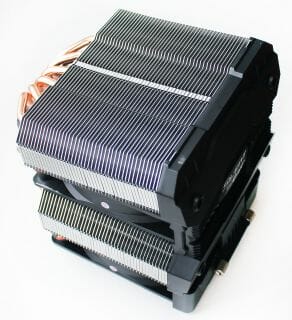
However, the design of the Silent Shark is not that new. It consists of an aluminum heatsink on six copper heatpipes that go through the copper base. The heatsink is topped with a plastic cap and is equipped with two cooling fans:
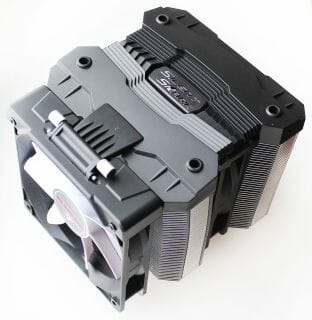
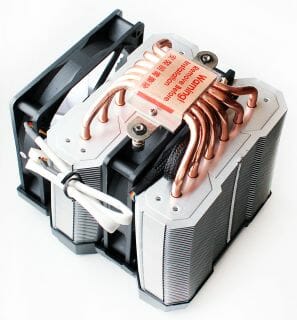
One of the fans is installed between the heatsink arrays, while the other one – on one of the exterior sides of the heatsink:
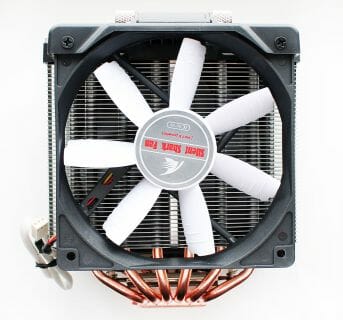
Each heatsink array consists of 45 aluminum fins, each measuring 140×45 mm and 0.4 mm thick. The fins are firmly pressed against the heatpipes 2 mm away from one another.
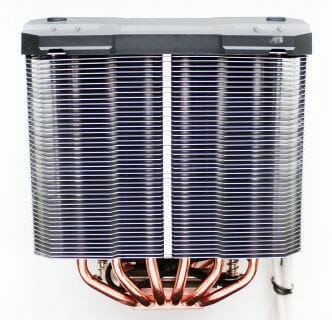
Note that the fins are pressed against the entire surface of the heatpipes, without the so-called “locks”. This is the most efficient method of ensuring proper contact between the heatpipes and heatsink fins.
The heatsink arrays are slightly pushed away from one another. Evercool refers to this solution as a V-heatsink, but we do not know the actual practical reasons for that:
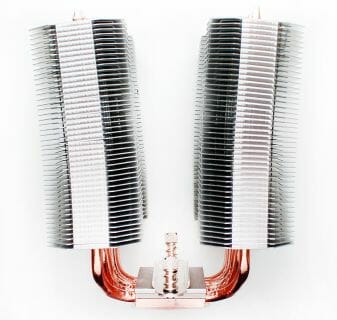
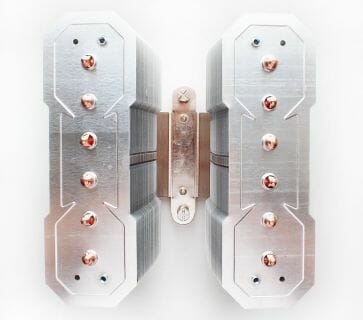
At the same time, I would like to point out that the heatsink is not optimized in any way towards reducing the airflow resistance, except for a low-profile deepening in the very center of the heatsink, which can hardly be regarded as an actual optimization of this sort.
The heatpipes pierce heatsink arrays along the same line at 20 mm distance from one another:
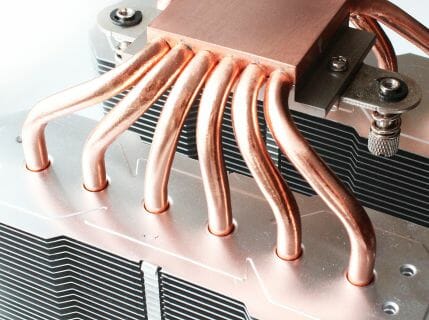
The heatpipes lie very close to one another inside special grooves in the base of the cooler. Evercool soldered all contact areas in the base. The base plate measures 40×37 mm and has a very well-finished surface:
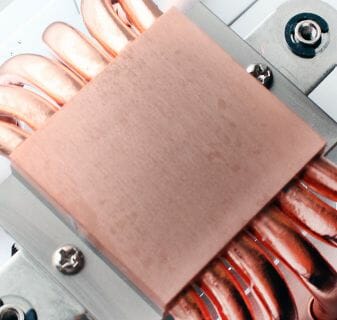
It is also impeccably even. That as well as the high pressure hold provided by the cooler retention produce very uniform thermal paste imprints:
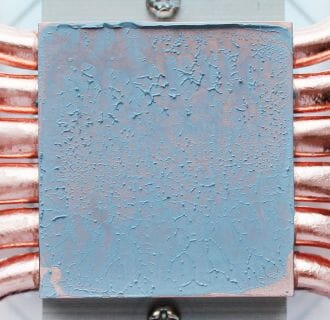
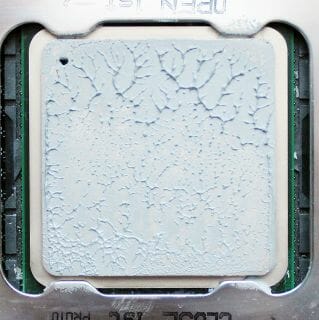
Evercool Silent Shark heatsink is equipped with two 120 mm fans that are attached to the plastic top cover with screws:
Evercool Silent Shark heatsink is equipped with two 120 mm fans that are attached to the plastic top cover with screws:
These are two different fans, although both of them are manufactured by Evercool:
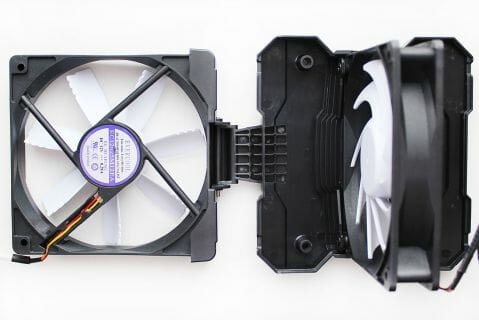
The external fan impeller has seven flat blades with “shark fins” on them and is called Silent Shark. As you may have already guessed, this is where he cooler’s name comes from. The rotation speed of this fan may not be adjusted and is set at 1400 RPM. However, our tests showed that the fan was rotating at 1670 RPM, which is 15% more than the declared specification. The cooler is supposed to generate up to 26 dBA of noise and create 60.6 CFM airflow.
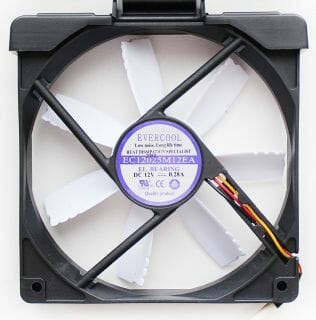
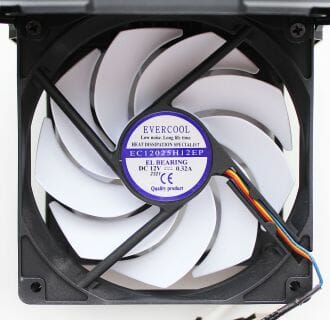
The second fan (model EC12025H12EP) also measures 120x120x25 mm, but features a completely different type of impeller and supports PWM rotation speed adjustment. Its fan works in the 800 RPM-2200 RPM rotation speed range. The official maximum noise level is declared at 16 dBA, which seems to be the noise reading at the minimal fan speed. The created airflow is at 60.6 CFM. Both fans of the Evercool Silent Shark cooler are built with fluid dynamic bearings that should last at least 60,000 hours.
Now that we have discussed the cooling fans, it is time to reveal that unique peculiarity of the Evercool Silent Shark cooler that was mentioned before. Namely, it allows placing the exterior fan at a 30-degree angle to the heatsink array it is attached to:
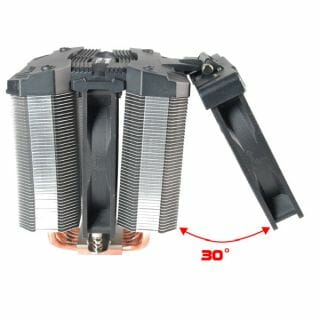
This allows directing the airflow towards the memory modules and heatsinks on the voltage regulator components around the processor socket thus lowering their operational temperature. Unfortunately, Evercool doesn’t mention how greatly this measure affects the efficiency of the actual CPU cooling.
Compatibility and Installation Tips
Evercool Silent Shark is compatible with all contemporary platforms as well as LGA 775. The step-by-step installation instructions are provided in the manual (a PDF-file, 9.69 MB). We are going to talk about the [peculiarities of the Evercool Silent Shark installation using the LGA 2011 platform as an example. However, there is going to be nothing new here, as it is very similar to the installation procedure for other LGA 2011 coolers. First thing you do is put retention mounts into the bracket holes:
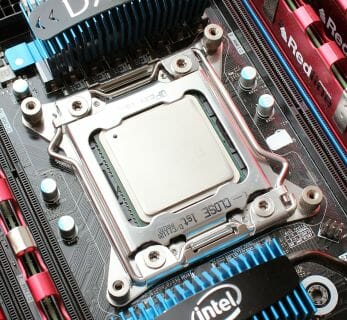
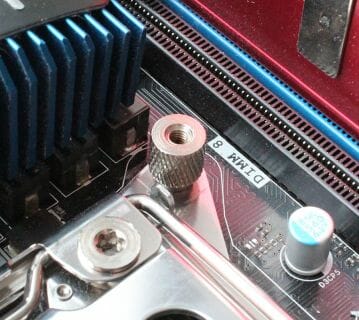
After that the steel rails are attached to these mounts. There are threaded studs in the middle of each rail:
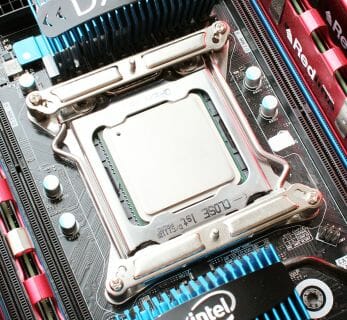
The last but not the least is to apply a layer of thermal paste and set the cooler on top of the processor. It needs to be evenly pressed against the processor by tightening two spring screws in the cooler itself. Of course, it must be done with the plastic cover with the fans removed, otherwise, you won’t be able to reach the screws. In other words, you install the heatsink and then the fan module.
The clearance between the lowest heatsink fin and the mainboard PCB is 50 mm, but the fans hang another 10 mm below the lower fin, so the exterior fan can theoretically conflict with the tall heat-spreaders on the memory modules, if you are using those:
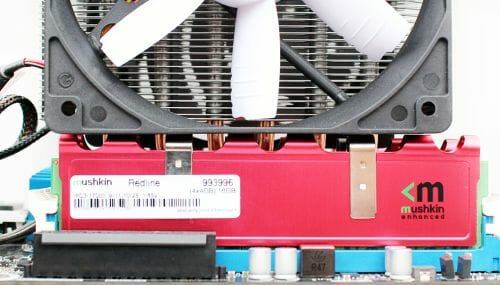
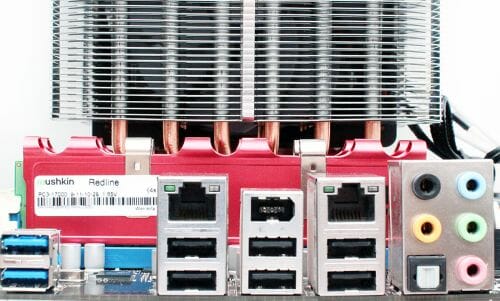
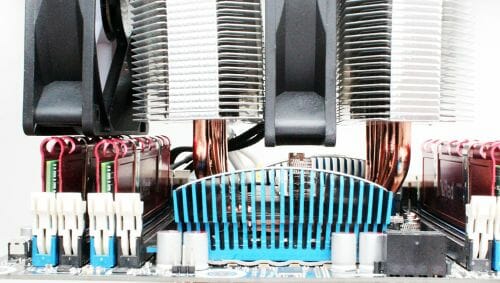
At the same time it is important to remember that the heatsink may be raised 30 degrees higher, so that its airflow is directed towards the memory modules and voltage regulator heatsinks. In this case it will not obstruct the cooler installation in any way.
Evercool Silent Shark cooler looks quite massive inside the system case due to decorative plastic top:
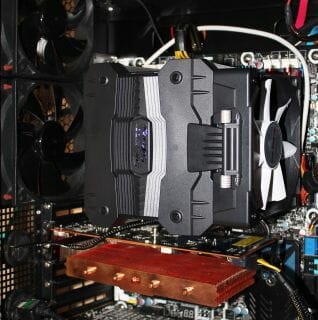
Although, as you have seen above, the heatsink itself is not that enormous.
Testbed Configuration and Testing Methodology
We tested all coolers inside a closed system case with the following configuration:
- Mainboard: Intel Siler DX79SI (Intel X79 Express, LGA 2011, BIOS 0537 from 07/23/2012);
- CPU: Intel Core i7-3960X Extreme Edition, 3.3 GHz, 1.2 V, 6 x 256 KB L2, 15 MB L3 (Sandy Bridge-E, C1, 32 nm);
- Thermal interface: ARCTIC MX-4;
- Graphics card: Gigabyte GeForce GTX 650 Ti 2 GB (GV-N65TOC-2GI);
- System memory: DDR3 4 x 4GB Mushkin Redline (Spec: 2133 MHz / 9-11-10-28 / 1.65 V);
- System drive: Crucial m4 256 GB SSD;
- Drive for programs and games: Western Digital VelociRaptor (300GB, SATA-II, 10000 RPM, 16MB cache, NCQ) inside Scythe Quiet Drive 3.5” HDD silencer and cooler;
- Backup drive: Samsung Ecogreen F4 HD204UI (SATA-II, 2 TB, 5400 RPM, 32 MB, NCQ);
- System case: Antec Twelve Hundred (front panel: three Noiseblocker NB-Multiframe S-Series MF12-S2 fans at 1020 RPM; back panel: two Noiseblocker NB-BlackSilent PRO PL-1 fans at 1020 RPM; top panel: standard 200 mm fan at 400 RPM);
- Control and monitoring panel: Zalman ZM-MFC3;
- Power supply: Seasonic SS-1000XP Active PFC F3 1000 W (with a default 120 mm fan).
For the today’s tests we overclocked our six-core processor with the clock generator frequency set at 125 MHz, the multiplier at 34x and “Load-Line Calibration” enabled to 4.375 GHz. The nominal processor Vcore was increased to 1.385 V in the mainboard BIOS. Turbo Boost was disabled during this test session, and Hyper-Threading technology was enabled to increase the heat dissipation. The memory voltage was at 1.65 V and its frequency was 2000 MHz with 9-11-10-28 timings. All other parameters available in the mainboard BIOS and related to CPU or memory overclocking remained unchanged.
All tests were performed under Windows 7 Ultimate x64 SP1 operating system. We used the following software during our test session:
- LinX AVX Edition version 0.6.4 – to load the processor (memory – 4500 MB, Problem Size – 24234, two 11-minute cycles);
- Real Temp GT version 3.70 – to monitor the processor core temperatures;
- Intel Extreme Tuning Utility version 3.1.201.5 – for monitoring and visual control of all system parameters during overclocking.
So, the complete screenshot during the test session looks as follows:
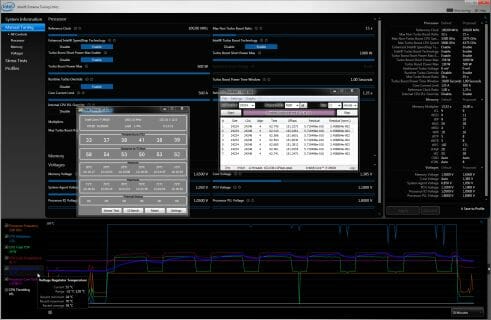
The CPU was loaded with two consecutive LinX AVX test runs with the settings as indicated above. The stabilization period for the CPU temperature between the two test cycles was about 8-10 minutes. We took the maximum temperature of the hottest CPU core for the results charts. Moreover, we will also provide a table with the temperature readings for all cores including their average values. The ambient temperature was checked next to the system case with an electronic thermometer with 0.1 °C precision that allows hourly monitoring of the temperature changes over the past 6 hours. The room temperature during our test session varied between 23.6-24.0°C.
The noise level of each cooler was measured between 1:00 and 3:00 AM in a closed room about 20 m2 big using CENTER-321 electronic noise meter. The noise level for each cooler was tested outside the system case when the only noise sources in the lab were the cooler and its fan. The noise meter was installed on a tripod and was always at a 150 mm distance from the cooler fan rotor. The tested cooling systems were placed at the edge of the desk on a sheet of polyurethane foam. The lowest noise reading our noise meter device can register is 29.8 dBA and the subjectively comfortable noise level in these testing conditions was around 36 dBA (do not mix it up with low noise level). The fan(s) rotation speed was adjusted in the entire supported range using our in-house controller by changing the voltage with 0.5 V increment.
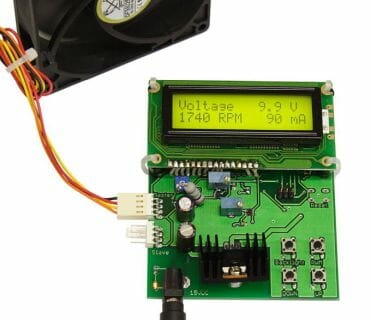
Just like in our recent Zalman LQ315 review, we took into account the price of the Evercool Silent Shark cooler ($75), when we selected a competitor for it. We decided to go with Phanteks PH-TC14PE ($79) equipped with two default 140 mm fans:
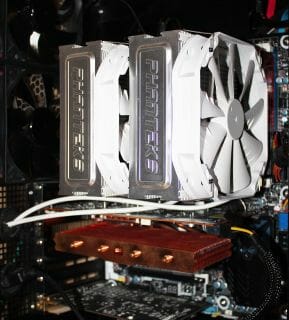
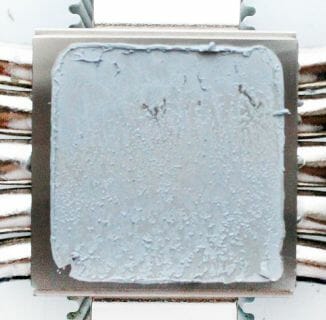
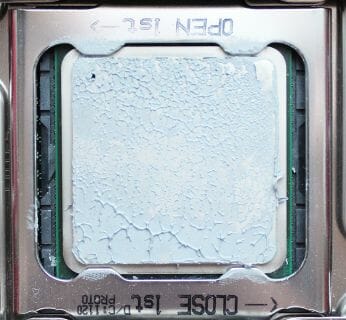
Besides its default fans, Evercool Silent Shark was also tested with two alternative 120 mm Corsair SP120 High Performance Edition fans:
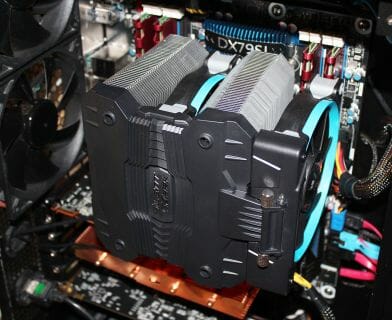
The rotation speed of all fans was controlled using the same special controller I mentioned above with ±10 RPM precision and 200 RPM increments.
Performance
Cooling Efficiency
The results of our cooling efficiency tests on Evercool Silent Shark and its competitor in an LGA 2011 platform are given in the following table and diagram:
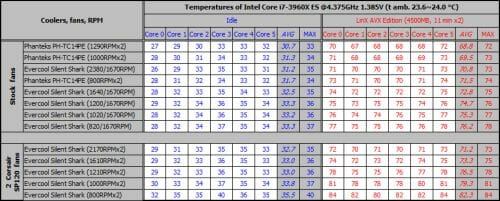
Frankly speaking we didn’t expect Evercool Silent Shark to do so well: at maximum and average speeds of its two fans it competed successfully against the Phanteks PH-TC14PE! Of course, Evercool Silent Shark has a dual-array aluminum heatsink with larger effective surface, six copper heatpipes 6 mm in diameter, two fans, highly reliable retention with high pressure hold, but we have already tested a variety of coolers that had all of the above, and none of them could be considered a worthy opponent to Phanteks. Here, on the contrary, we see very good cooling efficiency in the nominal operational mode.
At the maximum speed of its default fans Silent Shark is only 1?C behind PH-TC14PE, at the medium speed of 1640/1670 RPM the difference is the same 1?C, though the Phanteks cooler works at only 800 RPM in this case/. If we look at the lower fan speeds, Evercool Silent Shark loses very little efficiency, about a degree per increment of the central fan speed. And the reason for that is the exterior fan, which rotation speed cannot be adjusted.
If we equip the Evercool Silent Shark heatsink with two identical Corsair fans, which can be adjusted in sync, we will see a more vivid dependence of the heatsink efficiency on the fans speed. It would even be fair to call it linear, because every time the fan rotation speed is lowered by 200 RPM (except for the first 600 RPM), the CPU temperature increases by 3?C, and at 800 RPM the cooler could no longer bear the load that is why the maximum temperature value is crossed out. Overall, we cannot claim that using two alternative fans helps improve the cooling efficiency of Evercool Silent Shark. It is possible that if we could install a 140 mm fan instead of a 120 mm one, we could have won a few degrees, but the plastic fan mounts of the Evercool Silent Shark cooler do not allow that.
Now let’s add the obtained results to summary table and diagram, where all coolers are tested in their default configurations in quiet mode and at maximum fan rotation speed. The processor in this case was overclocked to 4,375 MHz with the Vcore set at 1.385 V:
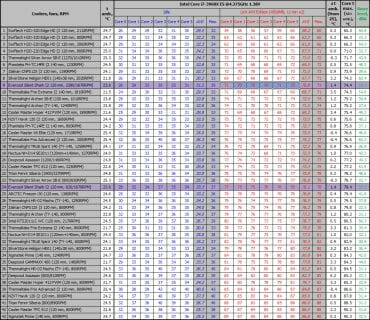
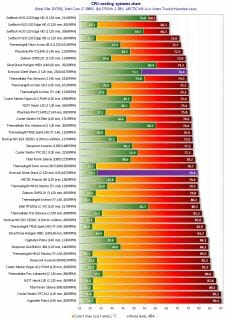
At the maximum rotation speed of the two default fans, Evercool Silent Shark loses only to four top air super-coolers. This is a great result, even though in terms of acoustics, Silent Shark managed only to outperform SilverStone Heligon HE01. In relatively quiet mode when the central fan rotates at 820 RPM, Evercool Silent Shark stays in the leading group and outperforms such powerful competitors as Thermalright Macho or Archon. However, it is important to keep in mind that the exterior fan of the Evercool Silent Shark cooler doesn’t support fan rotation speed adjustment that is why it will always spin at 1600 RPM (1400 RPM ±15%), according to its official technical specifications.
After this test we decided to check out what Evercool Silent Shark was capable of at even higher CPU clock. Unfortunately, none of our numerous attempts engaging difference Vcore settings succeeded. Each test ended up in an error.
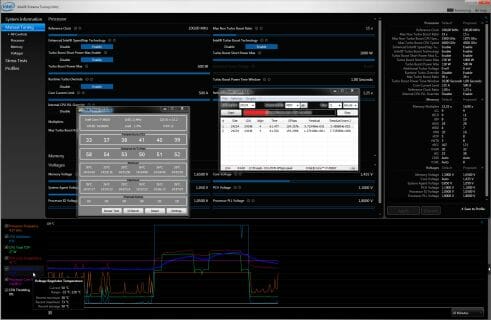
As a result, Evercool Silent Shark cooler took the leading spot in our summary table and diagram for maximum CPU overclocking, but only in the junior group:
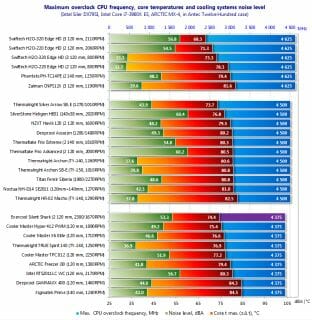
Noise
We measured the noise level of our coolers throughout the entire speed range of their fans, as described in the chapter on testing methodology. Here are the results:
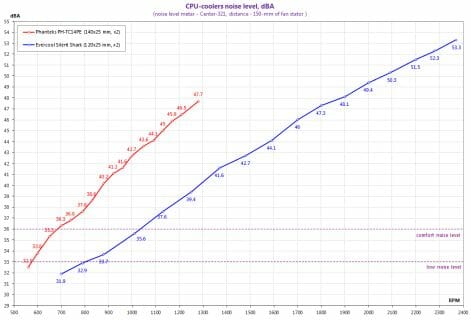
As we can see, Evercool Silent Shark has an advantage at the same fan rotation speeds. In fact, this isn’t surprising, because it uses 120×25 mm fans vs 140 mm fans on Phanteks cooler. Silent Shark remains acoustically comfortable up to 1030 RPM, while Phanteks PH-TC14PE has to drop the fan speed to 700 RPM to stay within the acoustic comfort zone. The maximum level of noise from Phanteks cooler is 47.7 dBA at almost 1300 RPM, while Evercool reaches the same level of generated noise at 1850 RPM. In other words, taking into consideration the previously obtained results of the cooling efficiency tests for these two coolers, we can conclude that they are practically equal. And we should give Silent Shark and Evercool in general due credit: this is a truly unprecedented accomplishment.
Conclusion
The new Evercool Silent Shark cooler amazed us with its remarkable cooling efficiency. Even though it is a little bit behind the best of the best (in terms of maximum processor overclocking), we have to admit that this Evercool product turned out a great success. In our opinion, the potential of this cooler hasn’t been exhausted yet, because all they really have to do is give up the plastic cap, use traditional wire clips to attach two high-quality 140 mm fans with synchronous PWM support in the 600-1600 RPM range, and make a few technologically simple optimizations to the fins in order to lower airflow resistance. After that Silent Shark from Evercool will take the well-deserved spot among the leaders in contemporary air cooling. However, even the way it is the new Evercool Silent Shark is very attractive due to its high efficiency and universal design, reliable retention, simple installation and ability to redirect airflow towards the electronic components around the processor socket.